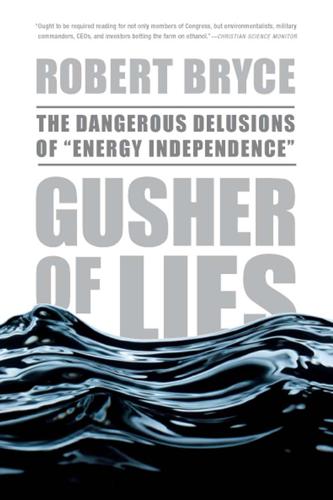
Gusher of Lies: The Dangerous Delusions of Energy Independence
by
Robert Bryce
Published 16 Mar 2011
But if the U.S. continues trying to turn its food into fuel, he warns, “we will bankrupt ourselves with regard to water.” FLEX-FUEL VEHICLES AND THE E85 SCAM The great comic actress Lily Tomlin once said that “no matter how cynical I get, I can’t keep up.” After watching George W. Bush’s March 2007 appearance at the White House with the top executives from America’s biggest automakers, it’s easy to identify with Tomlin’s comment. During the meeting, the automakers were given an opportunity to display their latest vehicles on the White House driveway. The cars were all flex-fuel vehicles (FFVs) that were capable of burning E85. The me- The Impossibility of Independence 193 dia event was held to demonstrate the automakers’ and the Bush administration’s commitment to reducing oil consumption.
…
See also Subsidies Index Europe and Persian Gulf, 51–52 wind power in, 226–227 European Union, 64, 290 and carbon dioxide emissions, 270–271, 275 oil reserves in, 68 Extractive Industries Transparency Initiative, 75 Exxon Mobil, 80, 108, 110 Facioli, Sister Ines, 169 Fanon, Frantz, 263 FARC. See Revolutionary Armed Forces of Colombia Farm lobby, and ethanol, 187, 254 Fastow, Andrew, 162 Fatah, 55 Feinstein, Dianne, 281 Feith, Douglas, 120 FFV. See Flex-fuel vehicles Financial market, shift in, 244–245 First Iraq War, 23, 52, 55, 100, 103, 104, 238 Fischer, Franz, 215 Fischer-Tropsch technology, 215 Flex-fuel vehicles (FFV), 192–198, 259 Food, vs. ethanol, 158–162 Ford, Gerald, 1, 66 and coal-to-liquids, 214 and energy independence rhetoric, 100–101 Ford, Henry, 17 Ford, William Clay, Jr., 259 Foreign energy, assumptions about, 2 Fossil fuels, 8 and climate change, 43–44, 45 and energy density, 127–128 See also individual fuels Fourth generation warfare, 56–57 France, 19, 75, 250 Index Freeburg, Russell W., 32 Freedom from Oil: How the Next President Can End the United States’ Oil Addiction (Sandalow), 6 Freeman, S.
…
In 2004, the neocons’ Set America Free plan said that America should increase ethanol output “by commercializing the production of ethanol from biomass waste and dedicated energy crops.”131 After his 2006 movie, An Inconvenient Truth, was released, former vice president Al Gore promised that cellulosic ethanol would be “a huge new source of energy, particularly for the transportation sector. You’re going to see it all over the place. You’re going to see a lot more flex-fuel vehicles. You’re going to see new processes that utilize waste as the source of energy, so there’s no petroleum consumed in the process.”132 Gore’s former boss, Bill Clinton, loves cellulosic ethanol, too. While promoting Proposition 87 in California in 2006, he declared, “These things are not expensive.

The Quest: Energy, Security, and the Remaking of the Modern World
by
Daniel Yergin
Published 14 May 2011
This was the inexpensive breakthrough that would put confidence back into the minds of motorists. It cost only about $100 to make a car flex-fuel and thus enable drivers not to be reliant solely on ethanol and so eliminate the risk of driving somewhere and not being able to get home. Also, around this time, he did a highly influential analysis—“the Goldemberg Curve”—that demonstrated that Brazilian ethanol with no subsidies was now cheaper than gasoline. To say that flex-fuel vehicles “caught on” would be an understatement. In 2003 about 40,000 flex-fuel cars were sold in Brazil. By 2008 this number had surged to just over two million, and flex-fuel constituted about 94 percent of all new cars sold in Brazil.
…
Second, thirty years of experience and continuing research dramatically reduced production costs for ethanol. The third was the introduction of flex-fuel autos. These are vehicles with onboard computers that can detect by “sniffing”—that is, sensing whether the fuel is gasoline, a mixture of gasoline and ethanol, or mostly ethanol—and then adjust the engine accordingly. Flex-fuel vehicles entered the Brazilian market only in late 2003. José Goldemberg, an esteemed professor at the University of São Paulo, former government official, and one of the fathers of the Brazilian ethanol development, recognized that flex-fuel vehicles were transformative. This was the inexpensive breakthrough that would put confidence back into the minds of motorists.
…
The fear is that greater concentrations of ethanol could harm engines not designed to run on biofuels. There is also E85 fuel, which contains between 70 percent and 85 percent ethanol, but it can only be used in flex-fuel vehicles that can switch between oil and ethanol-based fuels or all-ethanol vehicles, specifically designed to accommodate this type of fuel. Currently such vehicles total only about 3 percent of the U.S. car fleet. All this may strike many as new. But it isn’t, not by any means. THE FIRST FLEX-FUEL VEHICLE Henry Ford did not much care for cities. “There is something about a city of a million people which is untamed and threatening,” he once said.

Living in a Material World: The Commodity Connection
by
Kevin Morrison
Published 15 Jul 2008
A goal set at the launch of its ethanol programme, which was in response to the large Brazilian sugar stockpiles in the early 1970s (Sandalow, 2006) when the country’s industry was a smaller sugar producer than Fidel Castro’s Cuba.22 The US set a similar goal around the same time and is further away than ever from achieving this. The success of the Brazilian ethanol programme is down to the popularity of the flex-fuel cars, which are vehicles that can run on gasoline and other fuels, such as ethanol. Aided by favourable tax breaks, Brazilian drivers have quickly taken flex-fuel cars to the road. The flex-fuel car acts as a safety valve for fluctuating commodity prices. The driver of the flex-fuel car chooses the balance of the mix between the two fuels based on the relative price: if the sugar-ethanol price is higher than gasoline, then more gasoline will be chosen, which will, in turn, moderate the demand for sugar-based ethanol until supply catches up and prices fall.
…
(Comex) 255 Commodity Future Trading Commission (CFTC) (US) 74, 253, 263 commodity indices 240–2 commodity market manipulation 245–7 Commodity Trading Advisors (CTAs) 238 Congo, copper in 201, 202, 210–11 | 293 Connaughton, James 29, 31 ConocoPhilips 57, 79 Conservation International 93 Continental Power Exchange (CPE) 257, 258 Cooke, Jay 198, 222 n. 18 copper 4, 9, 11 applications 187–90 Congo 201, 202, 210–11 cost 211–13, 214–17 demand 182–5 electrical applications 186–7 in electricity generation 194–5 history 185–6 prices 199–201, 222 n. 17 production 195–8, 199 recycling 183, 184–5 theft 179–82 trade 211–13 under-sea extraction 217 in vehicles 190–4 Copper Export Association 201 Copper Exporters Incorporated 201 Copper Producers’ Association 200 coralconnect.com 260 corn 68–84, 96–8, 98–9, 99–101 hybrids 101–3 GM 104–6 diversity 106–10 Corn Products 233 cotton 166 Countryside Alliance 146 credit crisis (2007) 7 Crocker, Thomas 138 Cruse, Richard 111 D1 Oils 57, 58, 59 Dabhol gas-fired power plant 35 Dales, John 138 Daly, Herman 136 Darwin, Charles 67 Davis, Adam 157 Davis, Miles 183 Day after Tomorrow, The 15 n. 1 De Angelis, Anthony ‘Tino’ 245 De Beers 200, 210 De Soto, Hernando 136 Deere, John 100 deforestation 87, 147 Dennis, Richard 237 Deripaska, Oleg 199 Deutsche Bank 246, 261 294 | INDEX Diamond, Jared 97 DiCaprio, Leonardo 130 Dimas, Stavros 160 distillers’ dried grains with solubles (DDGS) 81 Dittar, Thomas 231 Donchian, Richard 237–8 Donson, Harry 199 dot.com bubble 7, 14, 241, 243 Doud, Gregg 82, 83 Dow Jones-AIG Commodity Index 240 Dresdner Kleinwort 47 Drexel Burnham Lambert 254 Dreyfus, Louis 89 Duke Energy 258 Dunavant, Billy 237 DuPont 102 E85 79 Ealet, Isabelle 259, 260 Earth Sanctuatires 157 Earth Summit Bali 142 Rio 1992 141 Ebay 38 Ecosystem Marketplace 157 Edison, Thomas 17, 95, 186 Ehrlich, Paul 13, 14, 16 n. 9 Population Bomb, The 14 Eisenhower, President 40 El Paso 258 Electric Power Research Institute (EPRI) 153 electric vehicles 54, 191–3 11th Hour, The 130 Elf 261 Elton, Ben 135 Emissions Trading Program 139 Energy Information Administration (EIA) 38 Energy Policy Act 2005 (US) 28 energy security 28–9 Energy Security Act 1980 (US) 74 Enron 35, 164, 165, 213, 246, 257–64 Enron Online 213, 225 n. 40, 257, 258, 259 Environmental Protection Agency (US) 27, 62 n. 17, 75, 139 ethanol 69–70, 73–81, 92, 119 n. 6 see also biofuels Eurex 262 European Climate Exchange 146 European Union 142, 158, 160 Waste Electrical and Electronic Equipment (WEEE) 185 Evelyn, John 127 exchange-traded funds (ETFs) 13, 270 Exxon 32, 50, 52, 261 ExxonMobil 13, 79, 242, 254 Faraday, Michael 186 Farm Credit Administration 76 farm debt crisis 114–15 farm payments 115–16 farm sinks 154–5 Fearnley-Whittingstall 86 Federal Bureau of Investigation 246 Federal Clean Water Act (US) 156 F-gases 131 Firewire 260 Fisher, Mark 266, 269 Fleming, Roddy 219 flex-fuel cars 92–3 Fonda, Jane 114 Food and Agricultural Organization 148, 159 Ford, Bill 267 Ford, President Gerald 30, 115 Ford, Henry 73, 95, 195 Fordlandia 195 forest economics 149–50 forestry carbon credits 147 forests 147–51 Forrest, Andrew 199 Forward Contracts (Regulations) Act 1952 (US) 249 Forward Markets Commission (FMC) 249 Four Winds Capital Management 149, 159, 184 Franklin, Benjamin 157 Freese, Barbara 27 Friedland, Robert 199 Frost Fairs 127 fuel cell vehicles 53, 192–3 Futures Inc. 237 futures trading 235–6, 245, 247–50 gas 21–2 Gas Exporting Countries Forum (GECF) 61 n. 8 gasohol 73 gene shuffling 105 General Atlantic 267, 269 General Motors 53, 54, 191, 193 INDEX genetically modified organism (GMO) seeds 105–6 Glencore 199, 211 Global Forest Resources Assessment 2005 148 Global Initiatives173 n. 28 Global Positioning Systems (GPS) 191 global warming 24–6, 75 Globex 267 glycerin 82 Golder and Associates 206 Goldman 255, 260, 261 Goldman Sachs 57, 146, 254, 259 Goldman Sachs Commodity Index (GSCI) 240, 241 Goldstein Samuelson 245 Google 37, 38 Gore, Al 16 n. 5, 28, 38, 126, 129, 143 Government National Mortgage Association (Ginnie Mae) certificates 146 Grant, President Ulysses S. 214 Greenburg, Marty 269 greenhouse effect 131 greenhouse gas emissions 25, 131 see also carbon dioxide; nitrous oxide Greenspan, Alan 244 Gresham Investment Management 242, 243 Guggenheim brothers 197 Guttman, Lou 251, 255, 259 Hamanaka, Yasuo 246 Hanbury-Tension, Robin 146 Harding, President Warren 103 hedge funds 23640 Henry Moore Foundation 180, 181 Herfindahl, Orris 215, 226 n. 46 Heston, Charlton 15, n. 4 Hezbollah 46 Hi-Bred Corn Company 102 high fructose corn syrup (HFCS) 89–90 Highland Star 219 Hill, James Jerome 215 Homestead Act 1862 (US) 100 Honda 53 Howard, John 133, 171 n. 16 Hu Jintao, President 219 Hub, Henry 257 Humphries, Jon 181 Hunt Brothers 245 Hunter, Brian 246, 247 | 295 Hurricane Katrina 135 Hurricane Rita 134 Hussein, Saddam 48 hybrid cars 53 hydroelectric power 34 hydrogen cars 54 hypoxia zone 111 iAqua 165 IEA 32 IMF 16 n. 6 Inconvenient Truth, An 16 n. 5, 129 Indonesia palm oil 93–4 Integrated Gasification Combined Cycle (IGCC) 31–2 intelligent lighting 38 IntercontinentalExchange (ICE) 246, 261, 262, 265, 266, 267 Intergovernmental Council of Copper Exporting Countries (CIPEC) 203, 204 International Bauxite Association (IBA) 203 International Carbon Action Partnership (ICAP) 144 International Commercial Exchange (ICE) 273 n. 15 International Copper Cartel 201 International Energy Agency (IEA) 19, 25, 26, 40, 140–1, 153, 194 International Monetary Fund 57 International Panel on Climate Change (IPCC) (UN) 24, 132, 134, 147, 149, 170 n. 3 International Petroleum Exchange (IPE) 250, 256, 257, 262, 263, 264, 265 International Thermonuclear Experimental Reactor (ITER) 41 International Tin Council 203 International Treaty on Plant Genetic Resources for Food and Agriculture 107 Iowa Farm Bureau 36, 76, 155 Iowa Stored Energy Park 36 Japanese car market 18 Jardine Matheson 225 n. 40 Jarecki, Dr Henry 242, 243, 244 jatropha 57–9 Jefferson, Thomas 109 Jevons, William Stanley 20 Joint, Charles 181 296 | INDEX Joint Implementation (JI) 151 Jones, Paul Tudor 237, 238 Kabila, Joseph 210 Kanza, T.R. 211 Katanga of Congo 201, 225 n. 37 Kennecott Copper 199 Kennedy, Joseph (Joe) 264 Khosla Partners 38 Khosla, Vinod 37 Kitchen, Louise 258 Kleiner Perkins, Caufield & Byers 37 Kooyker, Willem 237, 238 Kovner, Bruce 237, 238 Krull, Pete 81 Kyoto Protocol 24, 27, 50, 140, 141, 142, 143, 147, 151, 169 n. 2, 194 clean development mechanism (CDM) 151 Lamkey, Kendall 112 Land and Water Resources, Inc. 155 Land Grant College Act (US) 101 Lange, Jessica 114 lead credits 172 n. 20 LED (light-emitting diodes) 38 Lehman brothers 241 Leiter, Joseph 245 Leopold II, King 210 Liebreich, Michael 39 Liffe 267 Lincoln, President Abraham 69, 100, 101, 119 n. 1 Lintner, Dr John 243 liquid coal 33–4 London Clearing House 263 London International Financial Futures and Options Exchange (Liffe) 262 London Metal Exchange (LME) 16 n. 10, 43, 196, 204, 212, 213, 246 Long Term Capital Management (LTCM) 247 Louisiana Light Sweet 253 Lourey, Richard 166, 168 Lovelock, James 131 Lyme Timber Company, The 149 Mackintosh, John 232, 234, 270 Madonna 6 malaria 156 Malthus, Thomas 130 manure lagoons 154–5 Mao, Chairman 210 Markowitz, Harry 243 Marks, Jan 268 Marks, Michel 252, 253, 254, 268 Marks, Rebecca 164, 165 Mars, Forrest E., Jr 60 Matheson, Hugh 225 n. 40 Matif 262 McCain, John 80 McDonalds 89 Megatons to Megawatts programme 42 Melamed, Leo 249–50, 264 Mendel, Gregor (Johann) 102, 122 n. 30 Merrill Lynch 241, 246 Mesa Water 163–4 methane 128, 131, 152, 154 methyl tertiary butyl ether (MTBE) 74 Microsoft 13 Midwestern Regional Greenhouse Gas Reduction Accord 143 milk 88–9 Milken, Michael 254 Millennium Ecosystem Assessment Board 156 Mittal, Laskma 212 Mobile 261 Mocatta Metals 242 Monsanto 106, 108 Montéon, Michael 199 Montgomery, David 138 Moor Capital 237 Moore, Henry 179, 182 Morgan, J.P. 246 Morgan Stanley 254, 255, 259, 260, 261 Muir, John 125 Mulholland, William 162 Murphy, Eddie 256 Murray Darling Basin 165–6 Musk, Elon 38 Nabisco 238–9 Nanosolar 38 Nasdaq 262 Nassar, President 210 National Aeronautics and Space Administration (NASA) 192 National Alcohol Programme (Brazil) 92 National Cattlemen’s Beef Association 82 National Commission on Supplies and Shortages (US) 7, 16 n. 5 National Corn Growers’ Association 80 National Energy Policy (US) 28 INDEX National Petroleum Council (NPC) 30, 50 National Security Space Office (NSSO) (US) 39 NCDEX 248, 249 Nelson, Willie 115 New Deal Farm Laws 103 New Deal for Agriculture 76, 89 New Energy Finance 39 New Farm and Forest Products Task Force 95 New York Board of Trade 240, 255 New York Cocoa Exchange 255 New York Coffee and Sugar Exchange 255 New York Cotton Exchange 237, 252, 255 New York Mercantile Exchange (Nymex) 43, 156, 246, 248, 251, 252, 253, 254, 255, 256, 257, 261, 262, 263, 264, 265, 266, 267, 268, 269 New York Metal Exchange 226 n. 42 New York Stock Exchange (NYSE) 198, 253, 255, 256, 264, 268, 270 Newman, Paul 265 Nicholson, Jack 162 nickel 217–18, 227 n. 50, 227 n. 52 nitrates 110–11 nitrogen oxide emissions 139 nitrous oxide 131, 139, 140, 152 Nixon, President 27, 30, 115, 231, 252 Noble Group 199 North, John Thomas 198, 199, 209 Norton, Gale 163 nuclear energy 34 nuclear power 21, 39–44 Nuexco Trading Corporation 42 Nybot 255, 256, 265 Obama, Barack 79, 80, 143 obesity 121 n. 19 O’Connor, Edmund 231 O’Connor, William 231 OECD 158, 159 oil 44–53 energy content 51–2 palm 93 prices 8–9, 10, 52–3 sands 49–50 shale 50–1, 64 n. 33 shocks 5, 7 soya 82 trading 250–5, 266 Oliver, Jamie 86 onion futures trading 245 | 297 Ontario Teachers’ Fund 244, 272 n. 8 Organization of the Petroleum Exporting Countries (Opec) 4, 9, 10, 22, 44–7, 203, 204, 251, 254 over-the-counter (OTC) trading 16 n. 8, 254–5 Owens Valley rape (1908) 162 Pachauri, Dr Rajendra K. 59 Page, Larry 38 Paley Commission 8 palm oil 93 Palmer, Fred 62 n. 14 Parthenon Capital 156, 267 PayPal 38 Peadon, Brian 165 perfluorocarbon 131 PGGM 244 Phaunos Timber Fund 149 Phelps Dodge 199 Phibro 254 Pickens, T.
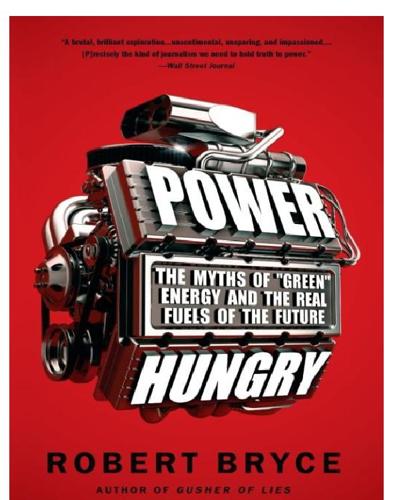
Power Hungry: The Myths of "Green" Energy and the Real Fuels of the Future
by
Robert Bryce
Published 26 Apr 2011
Mencken once remarked that there is always a “well-known solution to every human problem—neat, plausible, and wrong.” That quote comes to mind when considering the vocal group of politicos and neoconservatives who claim that the best way to cut American oil imports, and thereby impoverish the petrostates (and, in theory, reduce terrorism), is to require automakers to manufacture “flex-fuel” cars that can burn motor fuel containing 85 percent ethanol. (For more on this claim, and the people who are promoting it, see my book Gusher of Lies.) Their rationale is that using more ethanol made from corn, switchgrass, or other biomass will create competition in the motor fuel market and thereby depose oil as the world’s primary transportation fuel.
…
Once that is done, they claim, oil will no longer be a strategic commodity; its price will fall, the petrostates will be bankrupted, and a newly energyindependent United States will race back to the head of the line as the world’s undisputed sole superpower. The rhetoric put forward by these underinformed-but-persistent sophomores has proved so irresistible that several members of Congress have introduced legislation aimed at requiring automakers to produce flex-fuel cars. Fortunately, none of their proposed bills have passed. The idea that ethanol provides a viable solution betrays a near-complete ignorance of the world petroleum business. The supposed solution fails because it only replaces part of the crude oil barrel. During the refining process, a barrel of crude yields several different “cuts,” ranging from light products such as butane to heavy products such as asphalt.
…
evolution of fuel efficiency of, increasing increased usage of, and the transition to oil See also Electric cars; Hybrid cars; Natural gas vehicles (NGVs); SUVs Babcock & Wilcox Bald and Golden Eagle Protection Act Ban Ki-moon Barnett Shale Barton, Joe Bat Conservation International Batteries energy density of(fig.) technology of, issue with Belgium(fig.) Beller, Denis Benedict XVI (pope) Bethe, Hans Big Coal (Goodell) Bill Barrett Corporation Biofuels and deforestation See also Ethanol Biomass(fig.)(fig.) density of(fig.)(fig.) and flex-fuel cars footprint of(fig.) myth involving problems resulting from burning producing, from switchgrass, issues with See also Wood Birol, Faith Black carbon deposits and emissions Bolton, John Bonneville Power Administration Borneo Bottomless Well, The (Huber and Mills) BP BP Statistical Review of World Energy Bradley, Robert L., Jr.

Blindside: How to Anticipate Forcing Events and Wild Cards in Global Politics
by
Francis Fukuyama
Published 27 Aug 2007
All of these energy sources can play a role in the transportation system as part of what might be called a “fuel choice” strategy. The key to fuel choice is the deployment of multifuel vehicle technologies that are readily available and compatible with the nation’s current energy infrastructure. One key technology is the flex-fuel vehicle. This feature, which adds only $150 to the cost of a new car, enables the use of any combination of gasoline and alcohols such as ethanol and methanol. About six million such cars are already on America’s roads. In Brazil, where ethanol is widely used, the share of new car sales that have fuel flexibility has risen from 4 percent to 67 percent in just three years.
…
If all cars on the road by 2025 are either diesels burning some nonpetroleum fuel or flexible and plug-in hybrid vehicles, U.S. oil consumption would drop by as much as twelve million barrels a day. Oil would face competition at the pump with other energy sources, which should serve to dampen its strategic value, enabling America to regain control over its foreign policy and reduce its vulnerability to an energy catastrophe. A nationwide deployment of flex-fuel cars, plug-in hybrids, and alternative fuels could take place within two decades. But such a transformation will not occur by itself. In a perfect world government would not need to intervene in the energy market, but in a time of war, the United States is taking an unacceptable risk by leaving the problem to be solved by the invisible hand.
…
See also specific agencies Federal Emergency Management Agency (FEMA), in Homeland Security Department, 13–14 Federal Reserve, U.S.: on East Asian economy, 45–46; on U.S. economy, 51 FEMA. See Federal Emergency Management Agency Feminism, 133 Fidler, David, 88 Filters, information, 99–100 Financial crisis. See East Asian economic crisis Fischer-Tropsch, 77 Flex-fuel vehicles, 78–81 Flu. See Influenza Fogel, Robert William, 103 FOIA. See Freedom of Information Act Ford, Henry, 24–25 Ford Motor Company, 25 Forecasting, technological, limits of, 5 Foreign direct investment (FDI), in East Asia, 46, 49 Foreign policy, U.S.: energy dependence influencing, 75–76; religious belief and, 168; scenarios for, 153–68 France: demographics of, after World War I, 130, 132; future strategic surprises in, 107–08 Freedom, liberation of, 134 Freedom of Information Act (FOIA), 30 Frequencies vs. probabilities, 9 Friedman, Benjamin, 137, 138 Fuel(s): alternative, 78–81; efficiency standards for, 77; petroleum as, 26–27, 76–77 index Fuel choice strategy, 78–80 Fundamentalism.
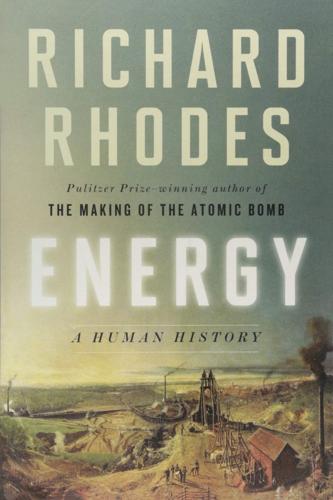
Energy: A Human History
by
Richard Rhodes
Published 28 May 2018
D. J. Salem and A. N. Rowan (Washington, DC: Humane Society Press, 2001), 8. 19. H. E. Barnard, “Prospects for Industrial Uses of Farm Products,” Journal of Farm Economics 20 (1938): 119. 20. Flex-fuel offered until 1931: David Blume, Alcohol Can Be a Gas! Fueling an Ethanol Revolution for the 21st Century (Santa Cruz, CA: International Institute for Ecological Agriculture, 2007), 11. 21. Model T flex-fuel features can be seen on a video hosted by David Blume at Fuel Freedom Foundation online, www.fuelfreedom.org, or on any museum Model T. 22. Standard Oil 85 percent of world market: Carolyn Dimitri and Anne Effland, “Fueling the Automobile: An Economic Exploration of Early Adoption of Gasoline over Ethanol,” Journal of Agricultural & Food Industrial Organization 5, no. 2 (2007), 7. 23. 1913 knock problem: T.
…
Power alcohol reentered the marketplace in 1906 when the federal government lifted the old Civil War alcohol tax that had made it uncompetitive with kerosene. It competed with gasoline as a source of automotive fuel across the first three decades of the twentieth century. Henry Ford designed his first production car, the Model T, with a flex-fuel system: it could run on either gasoline or alcohol, a feature that Ford continued to offer until 1931.20 A brass knob to the right of the Model T steering wheel allowed the driver to adjust the carburetor to accommodate either fuel. A spark-advance lever on the left side of the steering wheel then adjusted the timing of the spark plugs, which needed to fire at a different point in the engine cycle, depending on the fuel.21 Farmers, Ford thought, could make their own alcohol.
…
Texas Business Review (May/June 1981): 129–35. Goddard, Stephen B. Getting There: The Epic Struggle Between Road and Rail in the American Century. Chicago: University of Chicago Press, 1994. Goettemoeller, Jeffrey, and Adrian Goettemoeller. Sustainable Ethanol: Biofuels, Biorefineries, Cellulosic Biomass, Flex-Fuel Vehicles, and Sustainable Farming for Energy Independence. Maryville, MO: Prairie Oak, 2007. Goklany, Indur. Clearing the Air: The Real Story of the War on Air Pollution. Washington, DC: Cato Institute, 1999. Goldstein, Eli (2012). “CO2 Emissions from Nuclear Plants.” Submitted as coursework for PH241, Introduction to Nuclear Energy, Stanford University, Winter 2012 (online).

Sugar: A Bittersweet History
by
Elizabeth Abbott
Published 14 Sep 2011
To protect themselves against changes in sugar and gas prices, exchange rates and government policies, Brazilians have turned to flex-fueled vehicles such as Fiat, Chevrolet, Ford, Renault and Peugeot cars, the Volkswagen TotalFlex Golf and the Saab biofueled car. (A century ago, Henry Ford introduced the Model T, the first flex-fueled car: it ran on either gas or ethanol.) These men are likely prouder of their Model T’s sporty style after its conversion from a roundabout body than they are of its flex-fuel capacity—it can use either gas or ethanol as fuel, c. 1910. Brazil’s sugar industry is both efficient and exploitative, relying on streamlined technology and underpaid cane workers to produce cane cheaply.
…
Requiring that gas contain at least 25 percent ethanol ensures a regular and affordable fuel supply and supports the huge sugar industry; about half of Brazilian sugar is transformed into ethanol, and most of the rest is exported, making Brazil the world’s largest sugar exporter, ahead of the European Union. In a world where “development” implies the right to a car, the automotive and fuel industries are a married couple that must find ways to coexist. In Brazil, their common interests are facilitated by having flex-fuel and uni-fuel cars cost the same, and consumer confidence in the future availability of ethanol raises the resale value of flexcars. Although fueling a car requires significantly more ethanol than gas, ethanol’s cheaper price makes it the better buy. Brazil’s successful embrace of cane-derived ethanol fuel has much more than economic benefits to commend it.
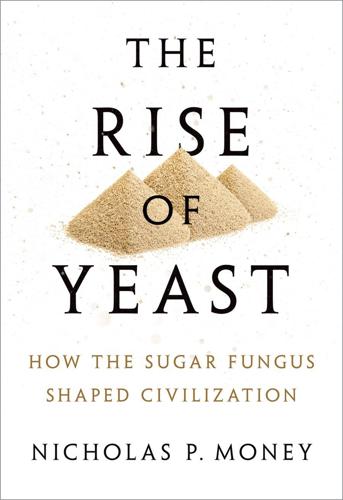
The Rise of Yeast: How the Sugar Fungus Shaped Civilisation
by
Nicholas P. Money
Published 22 Feb 2018
Degassing to expel CO2, and distillation, followed by a process called “molecular sieving”—to remove the remaining water— produces 200-proof absolute ethanol. Absolute ethanol is twice the strength of 100-proof vodka, which has an alcohol concentration of 50 percent. Mixed with gasoline, the distillate becomes E85 ethanol, a fuel blend with a maximum ethanol concentration of 85 percent that powers flex-fuel vehicles. To assess the costs and benefits of corn bioethanol properly, we have to consider the energy used to cultivate corn. Corn is an expensive crop, with conventional fuels needed to power the machinery, liberal applications of fertilizers, herbicides to keep the weeds away, insecticides to kill the pests, and lots and lots of water.
…
The mass of fibrous residue from the processed stalks, called “bagasse,” is used to fire boilers that furnish heat and generate power for the bioethanol plant. Fermentation and distillation methods are similar to those used to generate corn ethanol, but there is no need to use amylases to break down starch. Pure gasoline (E0) is no longer sold in Brazil, and newer cars run on flex-fuel blends ranging from 25 percent ethanol in E25, to pure ethanol in E100 fuel. E27 is the standard blend sold in Brazilian gas stations at the time of writing. Governmental standards for fuel blends are adjusted regularly because the cost of ethanol varies according to annual sugarcane yields. So while supply and demand and a farrago of geopolitical issues control oil prices, Brazilian ethanol is more responsive to a spell of bad weather and its effect on the sugarcane harvest.
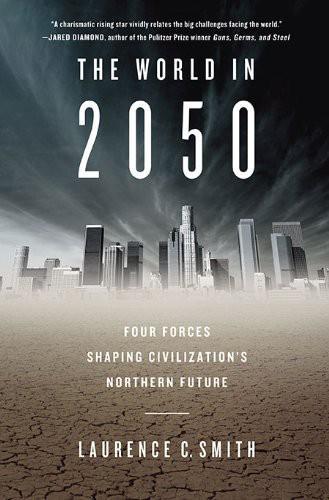
The World in 2050: Four Forces Shaping Civilization's Northern Future
by
Laurence C. Smith
Published 22 Sep 2010
The most common biofuel today is ethanol made from corn (in the United States), sugarcane (Brazil), and sugar beets (European Union). Making ethanol is essentially the ancient art of fermenting sugars to make alcoholic drinks, meaning that corn-based car fuel is very similar to moonshine. It is commonly mixed with gasoline, and in Brazil, cars run on flex-fuel mixtures containing up to 100% ethanol. Ethanol has higher octane than gasoline and for this reason was used in early racing cars. In fact, when cars were first being developed about a century ago, their makers strongly considered fueling them with ethanol. 123 The world’s two largest ethanol producers are the United States and Brazil, together producing more than ten billion gallons per year.
…
See also specific countries: and aboriginal peoples; and aging populations; and agriculture; and climate change; and crop yields; and demographic trends; European Community; European Space Agency; European Union; and global warming; and urbanization; and water resources exclusive economic zones (EEZs) extinction of species Federal Emergency Management Agency (FEMA) fertility rates Finland: and aboriginal peoples; and the Arctic Council; and Arctic resources; and demographic trends; economy of; and human settlement patterns; and immigration policy; and the “New North,” and NORC collaborations; and territorial boundaries; and UNCLOS; and winter roads Finnmark Act fisheries flex-fuel vehicles flooding Florida food supplies. See also agriculture Ford, Gerald Foreign Affairs Fort McMurray, Alberta Fortier, Louis fossil fuels. See also specific fuel types Fourier, Joseph France Franz Ferdinand, Archduke of Austria free trade Frey, Karen Friedman, Thomas fuel-cell cars fur trade FutureGen Gaddy, Clifford Gandy, Matthew Gautier, Catherine Gautier, Don Gaza General Agreement of Tariffs and Trade (GATT) General Motors Corporation genetics Geographic Information System (GIS) geography geology George III, geothermal power Germany: and aging populations; and demographic trends; and economic growth models; and immigration; and North Pole expeditions; and shifting economic power; and water resources; and wind power Ghawar oil field Ghesquiere, Henri Glacier National Park glaciers: and global warming; and lakes; and permafrost; and sea levels; and water resources Gleick, Peter Glen Canyon Dam Glennon, Robert global warming.
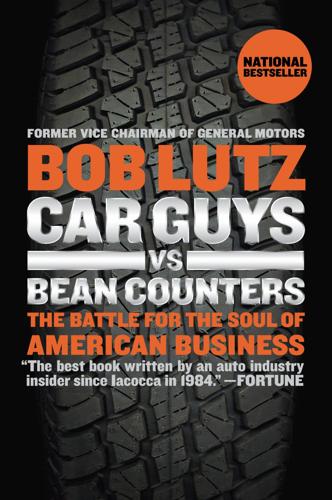
Car Guys vs. Bean Counters: The Battle for the Soul of American Business
by
Bob Lutz
Published 31 May 2011
Davis,Tom Delphi Dennis, Lyle Devine, John diesel engines Dodge Trucks Durant, Billy Earl, Harley economic value electric vehicles aerodynamics and EV1 Nissan Leaf see also hybrid vehicles End of Detroit, The: How the Big Three Lost Their Grip on the American Car Market (Maynard) Estes, Pete EV1 excellence Exide Technologies Federico, Jim Ferrari Fiat Fields, Mark financial crisis of auto industry bailout congressional automotive hearings Ford and GM’s bankruptcy stimulus and subprime mortgage disaster Ford Escape Explorer financial crisis and Flex fuel rules and Lincoln media and Mercury trucks and SUVs of Ford of Europe camshaft problem and Escort Sierra Franz, Klaus Friedman,Thomas fuel cells fuel economy regulations fuel prices Fuji Heavy Industries gasoline prices Gates, Bill GCG General Motors (GM): advertising by alliance strategy of APEX process at apologetic ad produced by Asia-Pacific operations of Australian operations of, see Holden automation at Automotive Task Force and bankruptcy of best practices at brand management at brand pyramids at brands shed by brand studios at culture of excellence at decline of design department of European operations of; see also Opel; Saab;Vauxhall exaggerated respect for authority at federal “ownership” of financial offices of fuel economy regulations and global integration of health care costs of history of Jobs Bank and Latin American operations of Lutz’s departure from Lutz’s hypothetical tenure as CEO of Lutz’s memo circulated in Lutz’s return to manufacturing standards at media and meetings at North American division of Perceptual Quality Program Review at Performance Management Process at product clinics at product development at product portfolio of rebirth of regional “companies” of strategy board meetings at Tech Center of vehicle line executives at General Motors vehicles: ashtrays in body fit of body paint on electric front-wheel drive in Global Epsilon architecture in interiors of prototypes of trucks wheels and tires of German automakers fuel rules and Gettelfinger, Ron global warming GMAC (General Motors Acceptance Corporation) GMC Terrain XUV Gonko, Betty Gore,Al grade-point averages Guts (Lutz) Harbour Report Hazen, Jack health care Henderson, Fritz “hider” design techniques Holden Honda Accord Acura CR-V Horn, Art Hudson Hummer hybrid vehicles Chevrolet Volt parallel vs. sequential Toyota Prius hydrogen fuel cells Iacocca, Lee federal loan guarantees and media and Inconvenient Truth, An Insolent Chariots, The (Keats) Isuzu Jaguar Japanese automakers alliances with CEOs of currency manipulation and fuel rules and health care and quality surveys and standardized work and truck and SUV market and voluntary restraint agreement and Jeep jets, corporate Jobs, Steve Jobs Bank Kady,Wayne Keats, John Korthoff, Douglas Land Rover LaSalle Lauckner, Jon leadership styles Lexus LG Chem Limbaugh, Rush lithium-ion batteries Lutz, Robert A.: departure from GM Guts hypothetical tenure as CEO of GM media and memo of motto of return to GM strongly held beliefs of Magna Corporation Mair,Alex management by objective management styles Marine Attack Squadron Mavroleon, Mano Maynard, Micheline Mazur, Dave McDonald, Jim McNamara, Robert media global warming and GM and Lutz and Saab and SUVs and Mercedes-Benz metal finishing military strategy Miller, Steve mission statement Mitchell, Bill Mitsubishi mortgages Mulally, Alan Nader, Ralph Nardelli, Bob Nash Nesbitt, Bryan New York Times Niedermeyer, Edward Nissan Armada Leaf Titan North American International Auto Show Norton, Andy NUMMI (New United Motorcar Manufacturing Company) Obama, Barack Oldsmobile Opel Antara Astra cost-cutting at Dudenhofen Proving Ground of Insignia metal finishing and midsize car program of selling of Vectra Zafira Packard Packard,Vance Paine, Chris Palmer, Jerry Pebble Beach Concours d’Elegance Piëch, Ferdinand PMP (Performance Management Process) Pontiac, Aztek Firebird G6 G8 V6 and V8, Grand Prix GTO Solstice Vibe PQPR (Perceptual Quality Program Review) Prechter, Heinz process religion product development at GM product portfolio creation Queen, Jim Range Rover Rattner, Steven Reilly, Nick ResCap Reuss, Mark Roche, Jim Rybicki, Irv Saab Saturn Aura Ion Vue science, business as Shelby, Richard Sloan, Alfred P.
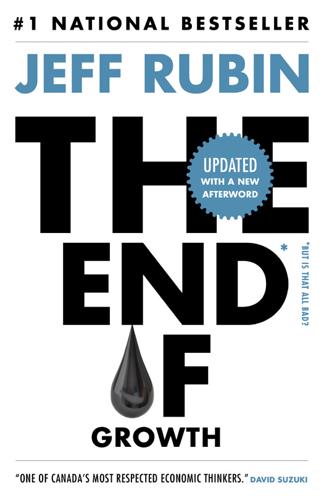
The End of Growth
by
Jeff Rubin
Published 2 Sep 2013
this page: The number of Alternative Fuel Vehicles calculated by the Department of Transportation doesn’t include hybrid electric vehicles or flexible fuel vehicles that run on an ethanol blend of less than E85. According to data from Wards, the cumulative number of hybrids sold in the United States surpassed 2 million in 2011. The Department of Energy says there are more than 8 million flex fuel vehicles on US roads, although many owners are unaware their vehicles have this capability. Most of the 2,400 fueling stations that offer E85 are located in the corn belt in the Midwest. this page: According to the International Energy Agency’s discussion of subsidies in its World Energy Outlook 2011, Iran and Saudi Arabia lead the world in fossil fuel subsidies.
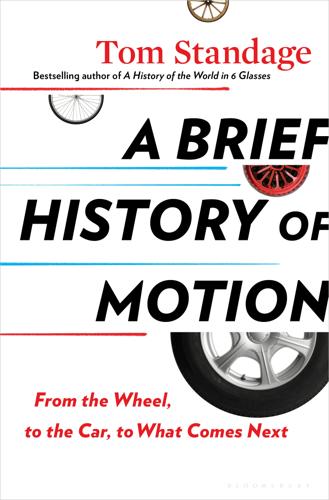
A Brief History of Motion: From the Wheel, to the Car, to What Comes Next
by
Tom Standage
Published 16 Aug 2021
The modern world would look very different without the geopolitical and environmental consequences of twentieth-century oil dependency. But could that alternative reality have come to pass? When the Ford Model T was launched in 1908, it was capable of running on either gasoline or ethanol; it was, to use the modern term, a flex-fuel vehicle. Controls mounted by the steering wheel let the driver adjust the carburetor and the spark-plug timing to work with either fuel, both of which were readily available in the United States. Indeed, an active debate was under way about which was the better long-term bet as an automotive fuel.
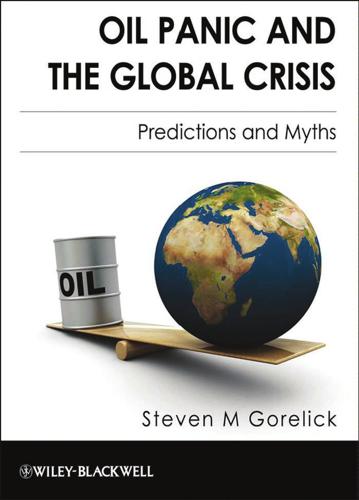
Oil Panic and the Global Crisis: Predictions and Myths
by
Steven M. Gorelick
Published 9 Dec 2009
., producing cars at a price that masses of drivers can afford) – issues reminiscent of the Electric Vehicle Company of 1897. The virtue of battery-powered electric cars is that electric motors are very efficient. In fact, they are about three times more efficient than internal combustion engines in equivalent small SUVs for highway driving. Electricity is the ultimate flex-fuel and can be produced by combustion of a variety of fuel-stocks. It is estimated that an acre of switchgrass (a fast-growing, perennial, tall prairie grass) used as a fuel to co-produce electricity at power plants could increase travel distance by 56 percent compared with converting that same cellulosic biomass to ethanol and using it directly as a transportation fuel.48 Technological advances in battery technology will be key to ushering Beyond Panic 215 in the era of the electric car.

Food and Fuel: Solutions for the Future
by
Andrew Heintzman
,
Evan Solomon
and
Eric Schlosser
Published 2 Feb 2009
In other words, the dawn of the mass production of cars and the mass production of food were intimately intertwined, and have remained that way since. By 1906, Ford founded his own automobile company and that year, when Congress finally repealed the liquor tax, he announced that ethanol was the fuel of the future. His famous Model T was the first flex-fuel car, designed to run on a mixture of gasoline and ethanol, very much like the cars coming off the Ford plant in Dearborn today. A century later, Henry Ford’s ethanol revolution is actually happening. The record-high, volatile oil prices, combined with concerns over energy security and climate change, have made ethanol once again a popular fuel.
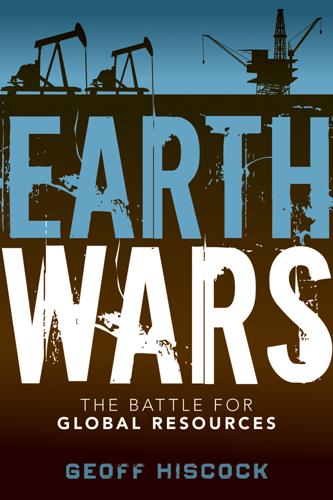
Earth Wars: The Battle for Global Resources
by
Geoff Hiscock
Published 23 Apr 2012
It will change the relative economics of low-carbon technology versus high carbon technology, and not just in China.”11 Interest in Biofuel Aside from power-generating renewables, there is massive interest in biofuel for transportation, particularly in Brazil and the United States, the two biggest producers of ethanol. Brazil has a thriving sugarcane-based ethanol industry to fuel its automobiles, with at least 12 global makers—VW, Ford, GM, Toyota, Honda, Mitsubishi, Nissan, Renault, Peugeot, Citroen, Fiat, and Kia—offering flex-fuel models for the Brazilian market that are capable of running on any blend of gasoline and ethanol. In the United States, pioneering automaker Henry Ford was an early advocate of biofuel, with some of his Model T Fords capable of running on ethanol as well as petrol or kerosene. Under U.S. energy security legislation, by 2022 at least 36 billion gallons (136 billion litres) of fuel used in the United States must come from renewable sources.
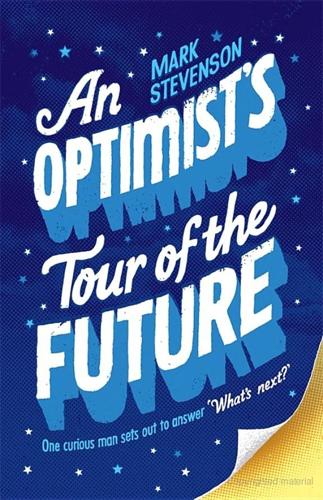
An Optimist's Tour of the Future
by
Mark Stevenson
Published 4 Dec 2010
Already there are eight million ‘flexible fuel vehicles’ on American roads that can run on a gasoline/ethanol blend (many are ‘E85’ vehicles that can run on blends of up to eighty-five per cent ethanol and fifteen per cent gasoline). General Motors has cautiously committed ‘to making 50 per cent of production flex-fuel capable’ by 2012. Ford, Chrysler and Toyota all offer E85 cars. In fact, Ford is returning to its roots – its famous Model T, which went into production in 1908, could run on ethanol, gasoline, or a blend of both. So why not fuel made from CO2 taken out of the sky? Already we have working technologies that can take CO2 from the air and organisms that can turn CO2 into liquid fuels.
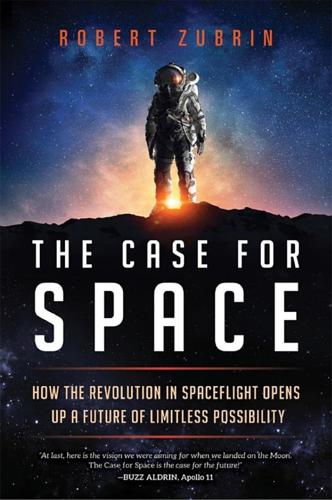
The Case for Space: How the Revolution in Spaceflight Opens Up a Future of Limitless Possibility
by
Robert Zubrin
Published 30 Apr 2019
They project a future of “resource wars,” requiring American military deployments to secure essential raw materials, notably oil.7 As a result of acceptance of such ideology, the United States has initiated or otherwise embroiled itself in conflicts in the Middle East costing tens of thousands of American lives (and hundreds of thousands of Middle Eastern lives) and trillions of dollars. For 1 percent of the cost of the Iraq War, we could have converted every car in the United States to flex fuel, able to run equally well on gasoline or methanol made from our copious natural gas.8 For another 1 percent, we could have developed fusion power. Instead, we are fighting wars to try to control oil supplies that will always be sold to the highest bidder no matter who owns them. Figure 12.2.

The Future Is Asian
by
Parag Khanna
Published 5 Feb 2019
An average Chinese factory worker earns nearly $30 per day, whereas in Indonesia and Vietnam workers still earn less than $10 per day. Japan has been the lead sponsor of ASEAN’s industrialization since the 1970s and in recent years has doubled its annual foreign direct investment (FDI) into Southeast Asia to more than $20 billion, fully aware that it is the future market for Nissan’s electric and flex-fuel (ethanol and other biofuel) vehicles. South Korea has further catapulted Southeast Asia into the top league of manufacturing by offshoring a broad range of electronics and automotive assembly work. Trade between South Korea and Vietnam is expected to reach $70 billion by 2020, and Samsung alone has $18 billion worth of investments in Vietnam from which its chip output will account for half the company’s exports to China.
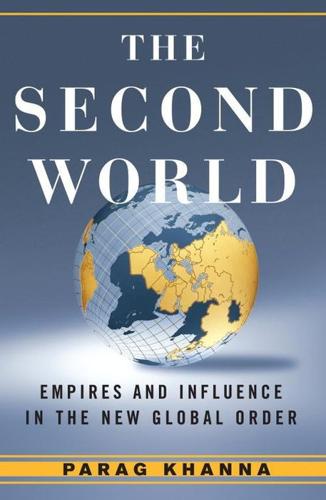
Second World: Empires and Influence in the New Global Order
by
Parag Khanna
Published 4 Mar 2008
Brazil’s investments in modern extraction technology are elevating Petrobras’s oil output almost to heavyweight Venezuela’s level. Despite its energy self-sufficiency, it is also enriching uranium to power nuclear plants. Most impressively, Brazil has planted and converted enough sugarcane into clean-burning ethanol to become its largest producer and exporter. The flex-fuel cars that run on it are appearing everywhere. But ethanol production is owned by wealthy families and conglomerates, while poor farmers still hack the sugarcane with machetes. Cities such as Curitiba and Porto Alegre have become models for the world—whether first, second, or third—in environmental management with their bold and efficient mass transit and recycling projects, earning comparisons to such paragons of civic planning as Norway.

Coastal California Travel Guide
by
Lonely Planet
Avis (%800-633-3469; www.avis.com) Budget (%800-218-7992; www.budget.com) Dollar (%800-800-5252; www.dollar.com) Enterprise (%855-266-9289; www.enterprise.com) Fox (%855-571-8410; www.foxrentacar.com) Hertz (%800-654-3131; www.hertz.com) National (%877-222-9058; www.nationalcar.com) Payless (%800-729-5377; www.paylesscar.com) Rent-a-Wreck (%877-877-0700; www.rentawreck.com) Minimum rental age and under-25 driver surcharges vary at six locations, including in LA and the San Francisco Bay Area. Simply Rent-a-Car (%323-653-0022; www.simplyrac.com) Rents hybrid, electric and flex-fuel vehicles in LA; ask about free delivery and pickup. Sixt (%888-749-8227; www.sixt.com) Super Cheap! Car Rental (%310-645-3993; www.supercheapcar.com) No surcharge for drivers ages 21 to 24; nominal daily fee applies for drivers ages 18 to 21 (full-coverage insurance required). Locations in the San Francisco Bay Area, LA and Orange County.